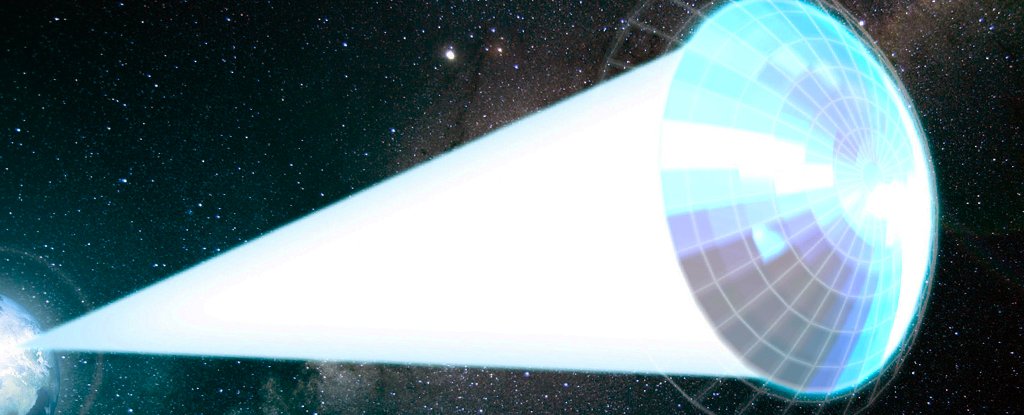Products You May Like
For centuries, people have dreamed of being driven at speed across the vast oceans of space by winds of light.
As whimsical as the idea sounds, nudging reflective sails slowly towards the speed of light using nothing more than the punch of photons might be our only plausible shot at reaching another star inside of a single human lifetime.
It’s also far easier said than done. Particles of light might be fast, but they don’t push very hard. If you make a sail light enough to feel the inertia of radiation, then the constant barrage of photons could inadvertently damage its material.
Making a sail that can withstand the hazards that threaten spacecraft on such a long journey is going to require some clever solutions; maybe the kind of solutions proposed in two studies published recently in the journal Nano Letters.
Devised by engineers from the University of Pennsylvania and the University of California at Los Angeles in the US as part of the Breakthrough Starshot initiative, the innovations aim to find ways to strike the balance in durability and mass required for an interstellar vessel.
“The idea of a light sail has been around for some time, but we’re just now figuring out how to make sure those designs survive the trip,” says Igor Bargatin, a mechanical engineer from the University of Pennsylvania.
Like particles of air hitting a sail made of cloth, waves of radiation exchange momentum with any objects they smack into. Unlike air molecules, photons, or light molecules, don’t have any resting mass, so any force they impart is going to be small.
As an example, the light bouncing off your body as you sunbathe is roughly equivalent in force to around one thousandth of a gram.
There are a couple of ways to beef up this pressure to get an object moving. One is to make a bigger sail that can catch more light. Another is to make the light hitting it more intense, by directing a whole lot of lasers at it, for example.
But herein lies some problems. Bigger sails mean more mass. Trimming the mass would make it easier to push, at the potential cost of making it less robust, putting the sail at risk of tears.
More light also presents some issues. As the sail accelerates, for example, the wavelengths of radiation hitting it will appear to shift slowly towards the red end of the rainbow, setting limits on the kinds of material that won’t absorb too much infrared and overheat.
Finding the right material to make the sails tough, lightweight, and capable of handling the heat produced by gigawatts of stretched out laser light has been the subject of previous investigations. But none have really focused on the trade-off between keeping the absorption low and the momentum high over a specific distance required to accelerate the craft.
In this latest suggestion, engineers propose making a sail from two layers made up of the compounds molybdenum disulfide and silicon nitride, both of which can be fabricated into sheets and have the kinds of optical properties to balance minimal absorption and emission of light as it stretches out.
A second paper has tackled the problem not from a materials perspective, but a structural one designed to handle the strain of increased photon pressure a laser array would impose.
Curving the sail would improve stability, much as it does in parachutes, but as the authors of the study point out, little research has been done into the stresses light pressure would place on this kind of structure.
Modeling a circular, spherically-curved sail on the scale of square meters – one that could tow a payload of a few grams – the team demonstrated a sufficient curvature is definitely the way to go.
Similar to the other study, the researchers also tinkered with differences in acceleration time to find the right balance of mechanical and thermal stresses and journey time.
Ideally, Breakthrough Starshot is looking to make a vessel light enough that it could hit speeds of around 20 percent the speed of light; enough to cover the 4.2 light years to Proxima Centauri within just a couple of decades.
It’s important to note that this technology might never be capable of transporting passengers. That’ll remain fodder for science fiction for some time yet.
But it just might feasibly provide us with an up-close look at a planetary system that isn’t our own within our lifetimes.
